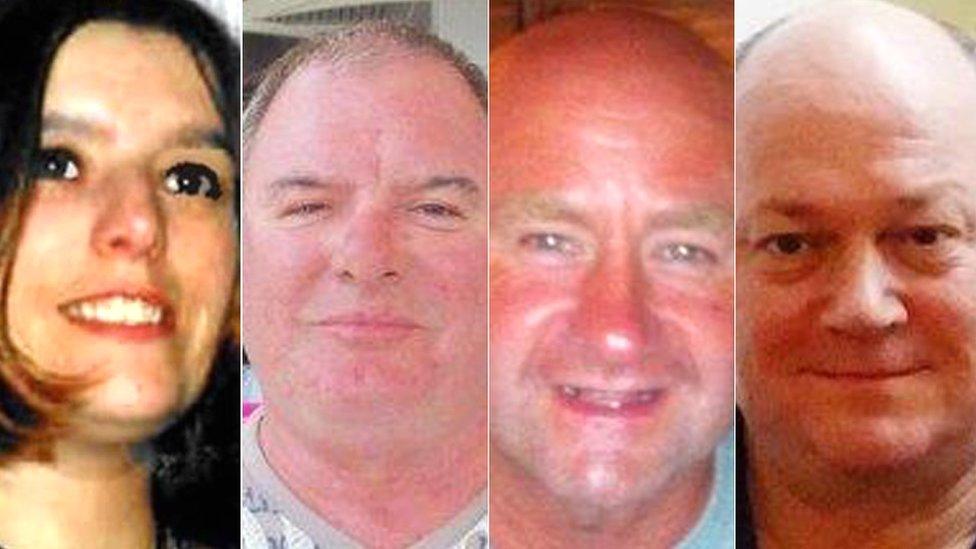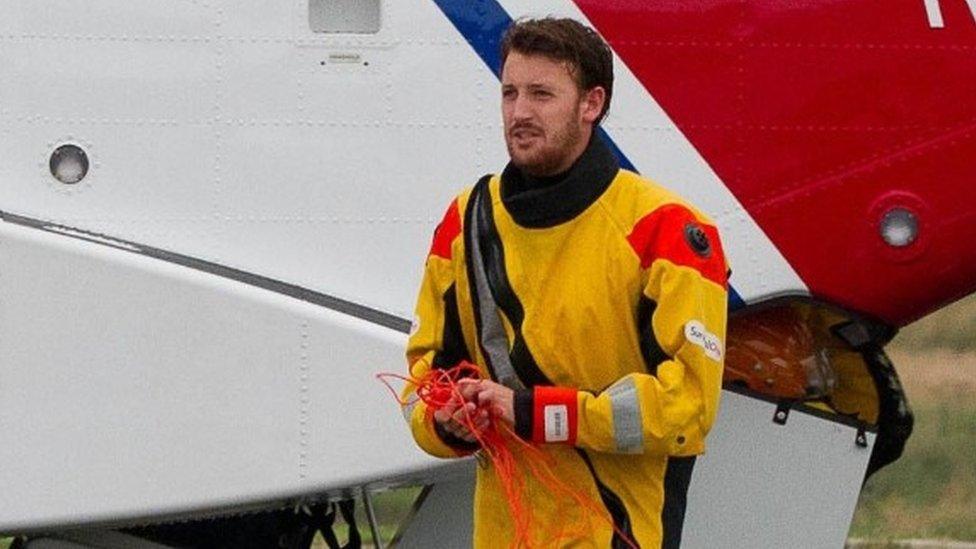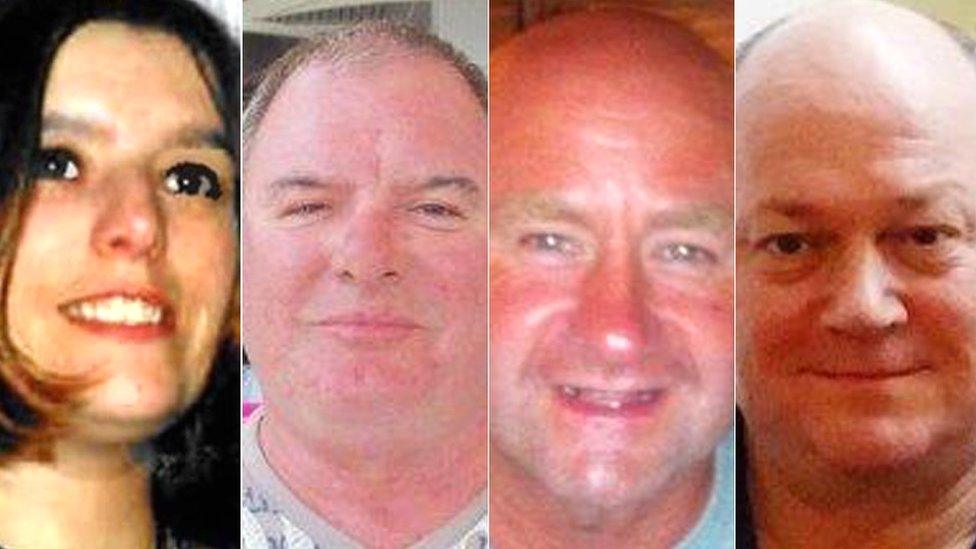Shetland Super Puma crash: Final prompt 'could have averted crash'
- Published

The Super Puma crashed into the water off Shetland
The commander of a helicopter which hit the sea off Shetland did not react to a final prompt which could have prevented the crash, an inquiry has heard.
Super Puma passengers Sarah Darnley, 45, from Elgin, Gary McCrossan, 59, from Inverness, Duncan Munro, 46, from Bishop Auckland, and George Allison, 57, from Winchester, died in 2013.
A crash investigator said it may have been "recoverable" when the commander was told they were down to 400ft.
However he did not take action.
The fifth day of the fatal accident inquiry heard the co-pilot gave the pilot flying the aircraft the prompt "100 to go" as they approached Shetland - which meant the helicopter was 400ft above the sea.
Pilot Martin Miglans replied "Roger" instead of "levelling" as expected.
Alison Campbell a senior inspector with the Air Accidents Investigation Branch (AAIB) specialising in the operations area, said: "'100 to go' should have prompted something.
"Unfortunately in this case it didn't."
She said that at 300ft the pilots were "highly unlikely" to have been able to recover the situation.
Ms Campbell said the helicopter in question was a "serviceable aircraft that hit the water" so the people operating it were therefore central to the investigation.
She said there was not a "common understanding" of how the approach into Shetland was flown.
'Challenging situation'
She said this could see different pilots do it in different ways, such as at varying speeds.
Ms Campbell said in the "poor" cloudy weather conditions the crew had faced a "challenging situation".
Martin Richardson, for the Crown, asked if by the time they were down to 300ft above sea level was there anything that could be done.
The investigator said it was very difficult to assess, and described the situation known as "vortex ring".

Four people lost their lives in the crash in the 2013 crash
She said a helicopter's rotors generate downward draft. That is behind the aircraft when it is travelling forward at speed.
However, she said when the aircraft is slowing down, that downward air can affect performance as that power can instead make the helicopter go down.
She said with little or no forward speed, and "downwash" from the rotors, applying more power from the cockpit would then make it worse.
"I think it's highly unlikely the pilots would have been able to recover at that point," she said.
'Joint enterprise'
Ms Campbell said if the crew had been making full use of automated control functions available it was possible "we would not all be sitting here now".
She said the choice of how to make a particular approach could come down the personal preference of pilots, and was dependent on circumstances.
Ms Campbell described pilots as a "joint enterprise".
She said: "This was not just this crew, this could have happened to any crew."
Sarah Darnley, Duncan Munro and George Allison drowned.
Gary McCrossan, who had cardiac disease, died from heart failure following the crash.
The inquiry has also heard that one survivor, Samuel Bull, who was believed to be 28, later took his own life after suffering post-traumatic stress disorder.
A total of 18 people were on board.
The inquiry, which was previously delayed due to coronavirus measures, continues before Derek Pyle, Sheriff Principal of Grampian, Highland and Islands.
- Published3 September 2020

- Published2 September 2020

- Published1 September 2020

- Published31 August 2020

- Published5 June 2020

- Published31 March 2020

- Published29 January 2020
